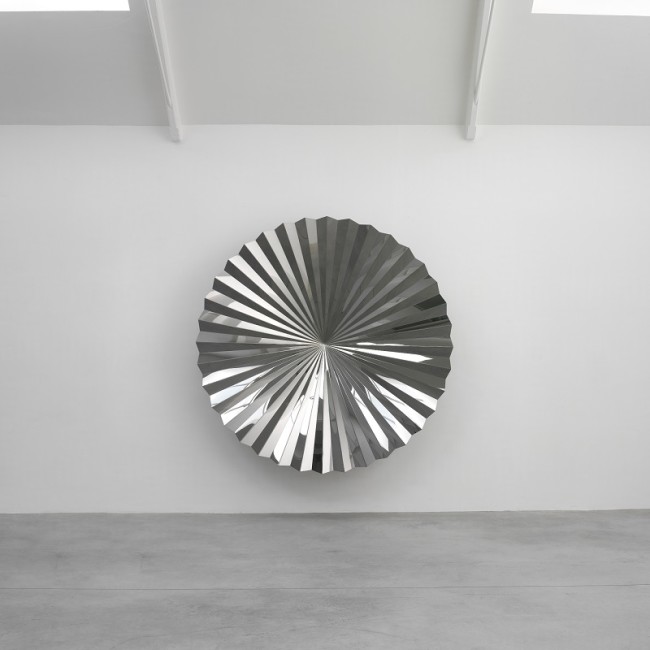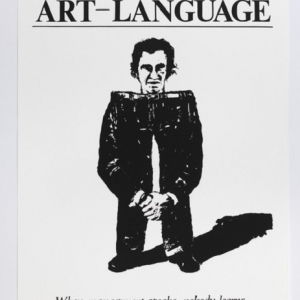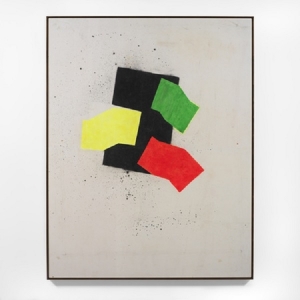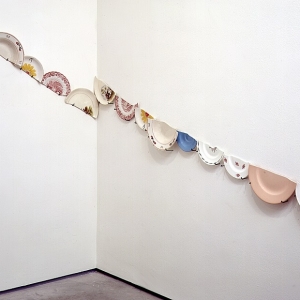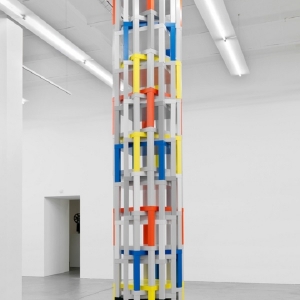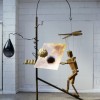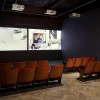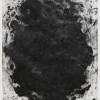“Anish Kapoor is perhaps the most famous name here. One piece is the illusionary steel, the other looks like a sort of ‘concrete marshmallow’. Very Kapoor”, one might say. Others artists introduce interesting narratives as well: Angela De La Cruz and Ryan Gander offer us a summarized view of their generation: the permanent exchange between illusion and reality. The first one shows what seems to be used canvas thrown on the ground, whilst the latter sees dozens of arrows strung across the walls and floor: a visually arresting indigenous attack. Both are concerned with situating themselves in time. They use references to the past, depicting actions that already happened.
There is no more distinct a trace of a civilization across the time than through its buildings and monuments. Liverpool artist Tony Cragg notably flirts with architecture in his work, responsible for the two big cones around the entrance. We also find Julian Opie, another would-be architect, from the New British Sculpture generation as we continue through the space. Whilst we might feel some resentment at the sight of a 2001 made skyscraper, we can’t deny this is the biggest symbol of the architecture of our time.
In Rousseau’s Wake (2013), Jason Martin gives us a huge piece of aluminum beautifully painted in black. The visual effect is stunning. The artist is “the present” in this time machine. The work Nostalgic for the Future, is a 2006 flashing green projection in the reception. In this provocative statement, Jonathan Monk seems inspired by Kubrick’s 2001 A Space Odyssey movie, made in 1968 but looking towards an idyllic future. Harzon Mirza, who presents a noisy underground installation in red and green obtains the same effect. Isn’t it funny that colorful neon lights and used TV sets always serve to illustrate the future?
The Art & Language posters are a must-see. With illustrations working to mock up a 1970s spirit, the posters invoke pamphleteer art with intent no longer seen.
Coincidentally, Julian Opie’s second piece, a 1998 black and white canvas, mirrors the same aesthetic and criticism of society. Richard Wentworth’s cut dishes hanging on the wall add their voice to the existing choir: the past is over.
The show first premiered in São Paulo at April 2013. Beyond these celebrations, Lisson is perhaps looking towards the future of market, the same movement recently made by White Cube and other art houses. Nostalgic for the Future is a good curatorial exercise: not too much of the future is represented, with the only discernible nostalgia is detected for the time when the art world was more focused on singular discourses, making it easier to pack more artists into the same space. This generation of shock and tension is created through powerful works, serving only as a plus for this show.
